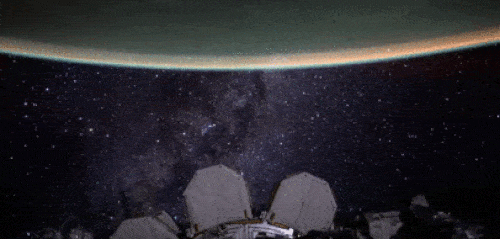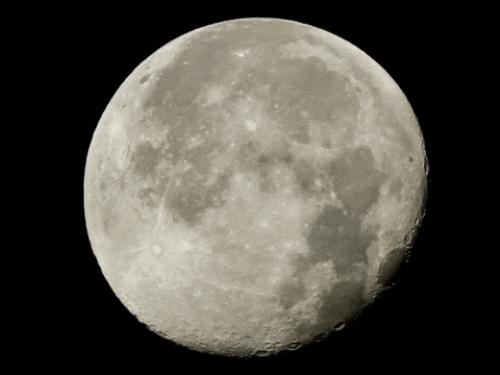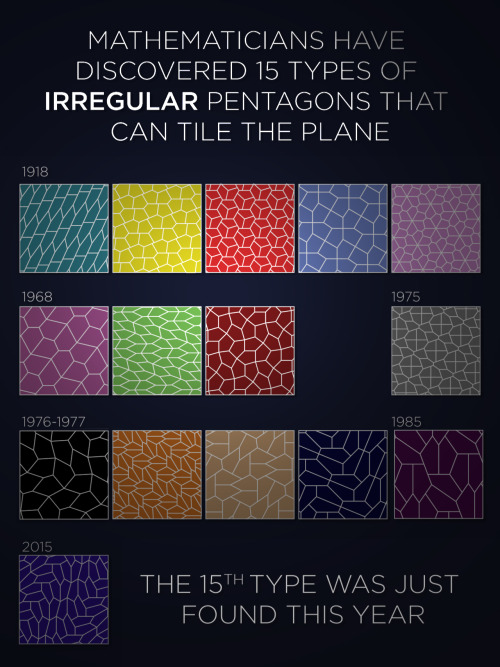Space-m17-blog - SpaceForLife

More Posts from Space-m17-blog and Others
You should do your job in such a fashion that others can build on top of it, so they will indeed say, “Yes, I’ve stood on so and so’s shoulders and I saw further.” The essence of science is cumulative. By changing a problem slightly you can often do great work rather than merely good work. Instead of attacking isolated problems, I made the resolution that I would never again solve an isolated problem except as characteristic of a class.
“You and Your Research,” Dr. Richard W. Hamming of Bell Labs (via ryanandmath)

(12 Nov. 1966) — Astronaut James A. Lovell is photographed inside his Gemini spacecraft during the Gemini-12 mission. Astronaut Edwin Aldrin is seen in the background and to the left. Photo credit: NASA

Jump With Feeling!


Infared Saturn This (false color) infrared image was taken with Hubble’s Near Infrared Camera and Multi-Object Spectrometer (NICMOS).
Credit: NASA/Hubble
National Aviation Day!

Today, August 19, is National Aviation Day! You might wonder why we’re celebrating National Aviation Day, let us tell you…
First, did you know that EVERY U.S. commercial aircraft and every U.S. air traffic control tower has NASA-developed technology on board? It’s true! Here at NASA, we’re invested in aeronautic research. Today’s air transportation system is an integral part of the U.S. and global economies.
It’s the primary mechanism for connecting countries across the world through moving people, as well as goods and services. You feel the impacts of aviation and the air transportation system everyday. Just about every product produced and purchased today has been touched by aviation in some way. Aircraft transport 17.7 billion tons of freight every year. While you may not have flown today, something you needed did.

Our aviation experts are dedicated to improving the design of airplanes so they’re more Earth friendly – less fuel use, lower pollution, less noise around airports. We also work with the Federal Aviation Administration to provide new tools to air traffic controllers for improving efficiency and reducing delays.
So, celebrate National Aviation Day with us! Spread Your Wings, take a photo, post it today and tag #SpreadYourWings and/or #NationalAviationDay. We may even pick your photo to highlight on our NASA web page!
International Space Station

The International Space Station is an important and special place that is built on international cooperation and partnership. The station is a convergence of science, technology and human innovation that benefits and advances our global community here on Earth.

While the space station is an important aspect of our low-Earth orbit exploration, it is also the key to our next giant leap to deep space and our Journey to Mars. For example, our recent VEGGIE experiment aboard the space station is a critical aspect of long-duration exploration missions farther into the solar system. Food grown in space will be a resource for crew members that can provide them will essential vitamins and nutrients that will help enable deep space pioneering.
Another important experiment underway is the Twins Study that involves twin astronauts Scott and Mark Kelly. These investigations will provide insight into the subtle effects and changes that may occur in spaceflight as compared to Earth by studying two individuals who have the same genetics, but are in different environments for one year. You can follow Scott Kelly as he spends a year in space.

The space station is the second brightest object in the sky (after the moon, of course), and you don’t even need a telescope to see it! We can even tell you exactly when and where to look up to Spot the Station in your area!
So, as you look to spot the station in the sky, remember that even though it may look small from Earth, the crew onboard (and at home) are making contributions to international partnerships and global research.








Big math news! It’s been thirty years since mathematicians last found a convex pentagon that could “tile the plane.” The latest discovery (by Jennifer McLoud-Mann, Casey Mann, and David Von Derau) was published earlier this month. Full story.

A photo of S Rings, a ring near Saturn. Took by Cassini with COISS on March 04, 2013 at 08:56:39. Detail page on OPUS database.






Illustration by Jean Luc Beghin for the 1970 edition of Spirou.
The top-right text says the image doesn’t depict any particular moment during the Apollo missions but that the two astronauts were picked arbitrarily: Frank Borman, commander of Apollo VIII (the first mission to fly around the moon) and Neil Armstrong, commander of Apollo XI (and the first person to walk on the moon).
I cleaned this image up a bit and the source-file can be found here, as well as other high definition scientific illustrations.
-
 not-kashy liked this · 1 year ago
not-kashy liked this · 1 year ago -
 tresfoufou liked this · 1 year ago
tresfoufou liked this · 1 year ago -
 biciudades liked this · 1 year ago
biciudades liked this · 1 year ago -
 tracchacothopis liked this · 1 year ago
tracchacothopis liked this · 1 year ago -
 andrejupiter liked this · 4 years ago
andrejupiter liked this · 4 years ago -
 yoan04 liked this · 4 years ago
yoan04 liked this · 4 years ago -
 take-whats-mine-take-some-more liked this · 5 years ago
take-whats-mine-take-some-more liked this · 5 years ago -
 darkdesires-blog liked this · 6 years ago
darkdesires-blog liked this · 6 years ago -
 thelittletiny reblogged this · 6 years ago
thelittletiny reblogged this · 6 years ago -
 ibo1481 liked this · 7 years ago
ibo1481 liked this · 7 years ago -
 loversln liked this · 7 years ago
loversln liked this · 7 years ago -
 moonofneptune liked this · 7 years ago
moonofneptune liked this · 7 years ago -
 mileysyrups liked this · 7 years ago
mileysyrups liked this · 7 years ago -
 berbsblog liked this · 7 years ago
berbsblog liked this · 7 years ago -
 stellarbanquet liked this · 7 years ago
stellarbanquet liked this · 7 years ago -
 squirrelofudun liked this · 7 years ago
squirrelofudun liked this · 7 years ago -
 63niu5 liked this · 7 years ago
63niu5 liked this · 7 years ago -
 blackwhite2022 liked this · 7 years ago
blackwhite2022 liked this · 7 years ago -
 isaac-barrow reblogged this · 7 years ago
isaac-barrow reblogged this · 7 years ago -
 isaac-barrow liked this · 7 years ago
isaac-barrow liked this · 7 years ago -
 humansxfox liked this · 7 years ago
humansxfox liked this · 7 years ago -
 susicivxs reblogged this · 7 years ago
susicivxs reblogged this · 7 years ago -
 nowheresheepdog reblogged this · 7 years ago
nowheresheepdog reblogged this · 7 years ago -
 saudademoonlight liked this · 7 years ago
saudademoonlight liked this · 7 years ago -
 bachatanero liked this · 7 years ago
bachatanero liked this · 7 years ago -
 nowheresheepdog liked this · 7 years ago
nowheresheepdog liked this · 7 years ago -
 himura39 liked this · 7 years ago
himura39 liked this · 7 years ago -
 e9ypt liked this · 7 years ago
e9ypt liked this · 7 years ago -
 funcoolmathgames reblogged this · 7 years ago
funcoolmathgames reblogged this · 7 years ago -
 hallelujahboys liked this · 7 years ago
hallelujahboys liked this · 7 years ago -
 smeansematica reblogged this · 7 years ago
smeansematica reblogged this · 7 years ago -
 downward-vector liked this · 7 years ago
downward-vector liked this · 7 years ago -
 bitchmakenzi reblogged this · 7 years ago
bitchmakenzi reblogged this · 7 years ago -
 granpuff reblogged this · 7 years ago
granpuff reblogged this · 7 years ago -
 rangerreddy45-blog liked this · 7 years ago
rangerreddy45-blog liked this · 7 years ago -
 mr-hatrack reblogged this · 7 years ago
mr-hatrack reblogged this · 7 years ago
I love space. I've been to space camp in Huntsville Alabama and I am planning on going every summer. I look forward to be an astronaut for nasa on the sls that is planned to be launched 2018. And the manned mission 2030. So yeah I won't let anything get in my way.
138 posts